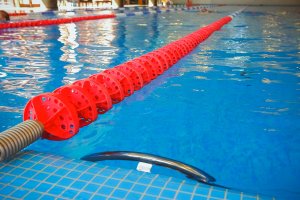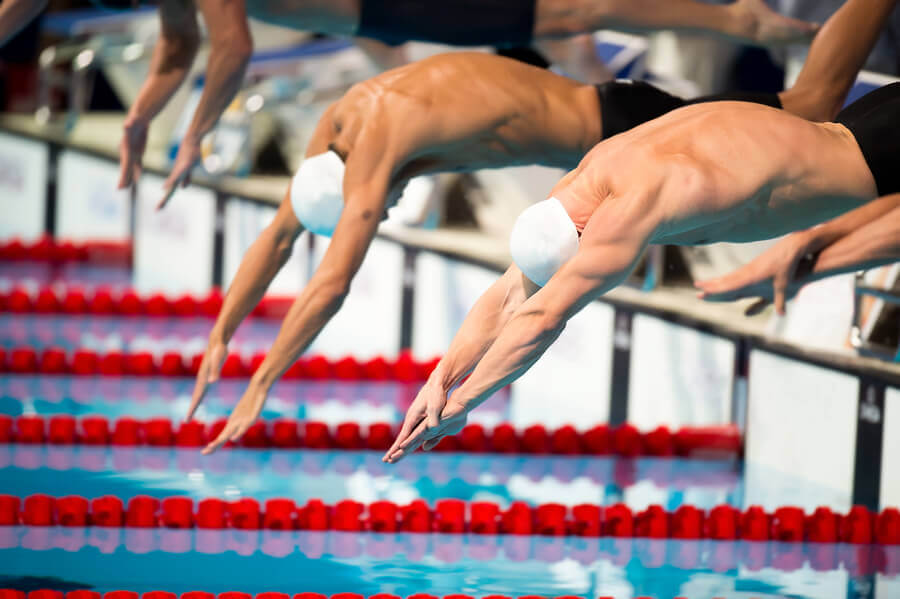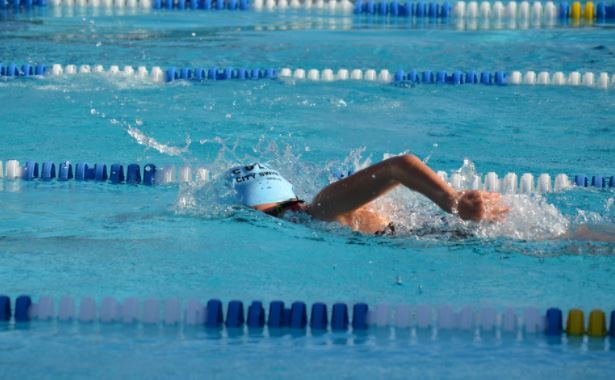Competitive Swimming: Rules and Pool Standards

Having an authorized swimming pool for competitive swimming isn’t as easy as it sounds. In addition to complying with the parameters needed for the sport, the owner will also have to abide by national health standards.
In Spain, the process is verified by the Royal Spanish Swimming Federation (RFEN). The organization sets all of the rules, procedures, and parameters that need to be taken into account. Read along to find out more about the regulation of competitive swimming pools.
Competitive swimming pools: the application for approval
If the owner of the swimming pool wishes to use it for competitions, they must send in a request. If it’s a new project, the request must appear in the Project Report and Execution Budget. In the case of an existing pool, the request is made directly to the RFEN.
The request can be made by filling in a technical form. The regional federation will be in charge of all documentation related to the pool. In general, the organization only requests the pool’s plans however, it can reserve the right to request other documentation if necessary.
Once the application has been handed in, a file will be opened for the applicant. This task is carried out by the Facilities Homologation Commission. From then on, the case is studied by the institution.
RFEN approval standards
There are many specifications and measures that a swimming pool must meet in order to qualify for competitions. Basically, most regulations distinguish between 25-meter and 50-meter installations. In principle, the pool must be measured fully and the length has to be respected.
Dimensional tolerance is another parameter that’s taken into account. It involves the measurement between the two front walls of the facility and measurements of the surface of the water.

The minimum allowed depth is 1.80 meters; the same goes for the depth at which the exit platforms are installed. This is all done while respecting a limit distance of zero to six meters from the wall.
The sidewalls of the installation have to be taken into account as well. The external walls have to be perfectly parallel and stable. The surface around the pool has to be non-slip.
There are also regulations on the exit platforms, floating lines, signaling, etc. All of this technical information can be found on the RFEN website.
Competitive swimming pools: water parameters
When it comes to the water, it must comply with the characteristics that are established by the Royal Decree 742/2013. This decree establishes the sanitary conditions that must be met in public and private swimming pools.
The RFEN ratifies the use of water from the general public supply network. The regulation also allows the use of water from other sources after the quality has been studied. Treatment substances must comply with the requirements as stated in the UNE-EN 13451 standard.
In addition, in order to qualify as a competition swimming pool, the water should not have any artificial turbulence.

Some more relevant data
The following are other important elements that have to be taken into account:
- Lighting: competition swimming pools must have uniform artificial lighting. Lighting must also comply with the UNE-EN-12193 standard which regulates the lighting of sports facilities.
- International competitions: in the event that the facility is selected for an international competition, the changes which must be made have to be monitored by the RFEN. International competitions usually require electric touch panels.
Finally, the restoration of swimming pools for competitions and the updating of regulations is also contemplated in RFEN regulations. There are even regulations that apply to the approval of swimming pools for water polo.
Having an authorized swimming pool for competitive swimming isn’t as easy as it sounds. In addition to complying with the parameters needed for the sport, the owner will also have to abide by national health standards.
In Spain, the process is verified by the Royal Spanish Swimming Federation (RFEN). The organization sets all of the rules, procedures, and parameters that need to be taken into account. Read along to find out more about the regulation of competitive swimming pools.
Competitive swimming pools: the application for approval
If the owner of the swimming pool wishes to use it for competitions, they must send in a request. If it’s a new project, the request must appear in the Project Report and Execution Budget. In the case of an existing pool, the request is made directly to the RFEN.
The request can be made by filling in a technical form. The regional federation will be in charge of all documentation related to the pool. In general, the organization only requests the pool’s plans however, it can reserve the right to request other documentation if necessary.
Once the application has been handed in, a file will be opened for the applicant. This task is carried out by the Facilities Homologation Commission. From then on, the case is studied by the institution.
RFEN approval standards
There are many specifications and measures that a swimming pool must meet in order to qualify for competitions. Basically, most regulations distinguish between 25-meter and 50-meter installations. In principle, the pool must be measured fully and the length has to be respected.
Dimensional tolerance is another parameter that’s taken into account. It involves the measurement between the two front walls of the facility and measurements of the surface of the water.

The minimum allowed depth is 1.80 meters; the same goes for the depth at which the exit platforms are installed. This is all done while respecting a limit distance of zero to six meters from the wall.
The sidewalls of the installation have to be taken into account as well. The external walls have to be perfectly parallel and stable. The surface around the pool has to be non-slip.
There are also regulations on the exit platforms, floating lines, signaling, etc. All of this technical information can be found on the RFEN website.
Competitive swimming pools: water parameters
When it comes to the water, it must comply with the characteristics that are established by the Royal Decree 742/2013. This decree establishes the sanitary conditions that must be met in public and private swimming pools.
The RFEN ratifies the use of water from the general public supply network. The regulation also allows the use of water from other sources after the quality has been studied. Treatment substances must comply with the requirements as stated in the UNE-EN 13451 standard.
In addition, in order to qualify as a competition swimming pool, the water should not have any artificial turbulence.

Some more relevant data
The following are other important elements that have to be taken into account:
- Lighting: competition swimming pools must have uniform artificial lighting. Lighting must also comply with the UNE-EN-12193 standard which regulates the lighting of sports facilities.
- International competitions: in the event that the facility is selected for an international competition, the changes which must be made have to be monitored by the RFEN. International competitions usually require electric touch panels.
Finally, the restoration of swimming pools for competitions and the updating of regulations is also contemplated in RFEN regulations. There are even regulations that apply to the approval of swimming pools for water polo.
All cited sources were thoroughly reviewed by our team to ensure their quality, reliability, currency, and validity. The bibliography of this article was considered reliable and of academic or scientific accuracy.
- Federación Española de Natación. Extraído de: https://rfen.es/es/
- Norma UNE. Normativa para piscinas de competición. Extraído de: https://www.une.org/encuentra-tu-norma/busca-tu-norma/norma?c=N0059495
This text is provided for informational purposes only and does not replace consultation with a professional. If in doubt, consult your specialist.








